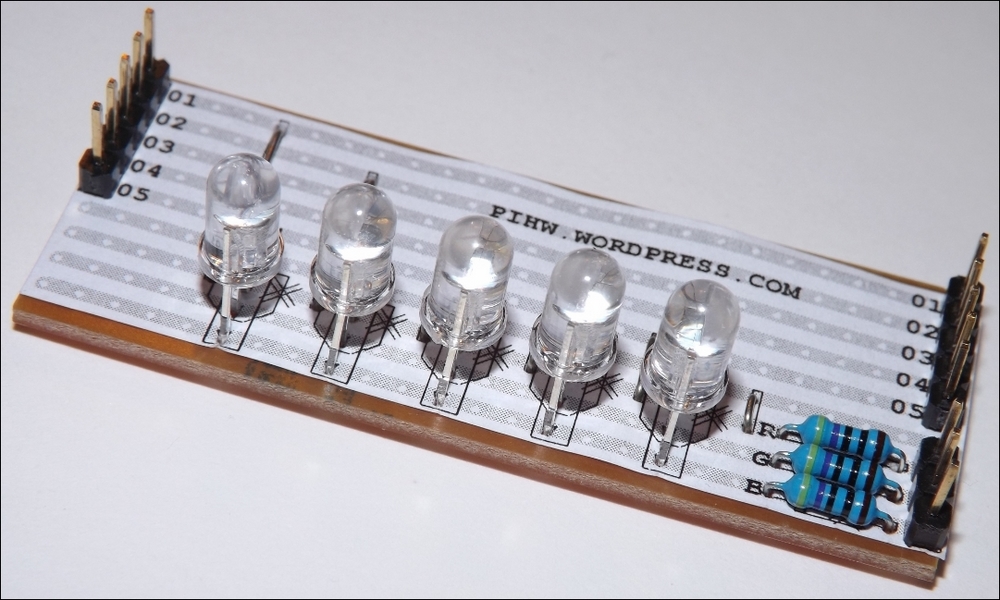The next example in this chapter demonstrates that some seemingly simple hardware can produce some impressive results if controlled with software. We return to using some RGB LEDs that are wired so that we only need to use eight GPIO pins to control the red, green, and blue elements of five RGB LEDs using a method called hardware multiplexing (see the Hardware multiplexing subsection in the There's more… section of this recipe).
You will need the RGB LED module shown in the following image:

The RGB LED module from PiHardware.com
As you can see in the preceding image, the RGB LED module from PiHardware.com comes with GPIO pins and a Dupont female to female cable for connecting it. Although there are two sets of pins labelled 1 to 5, only one side needs to be connected.
Alternatively, you can recreate your own with the following circuit using five common cathode RGB LEDs, 3 x 470-ohm resistors, and a Vero prototype board (or large breadboard). The circuit will...



